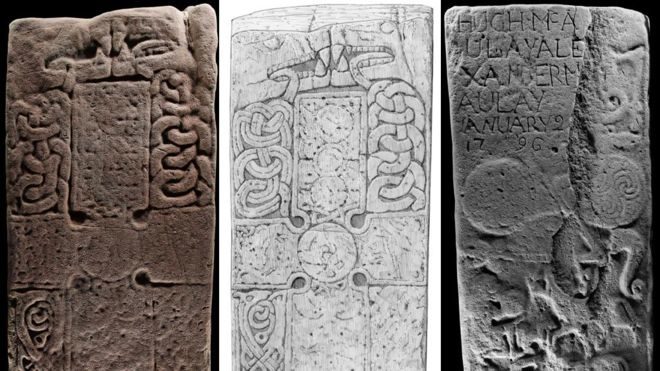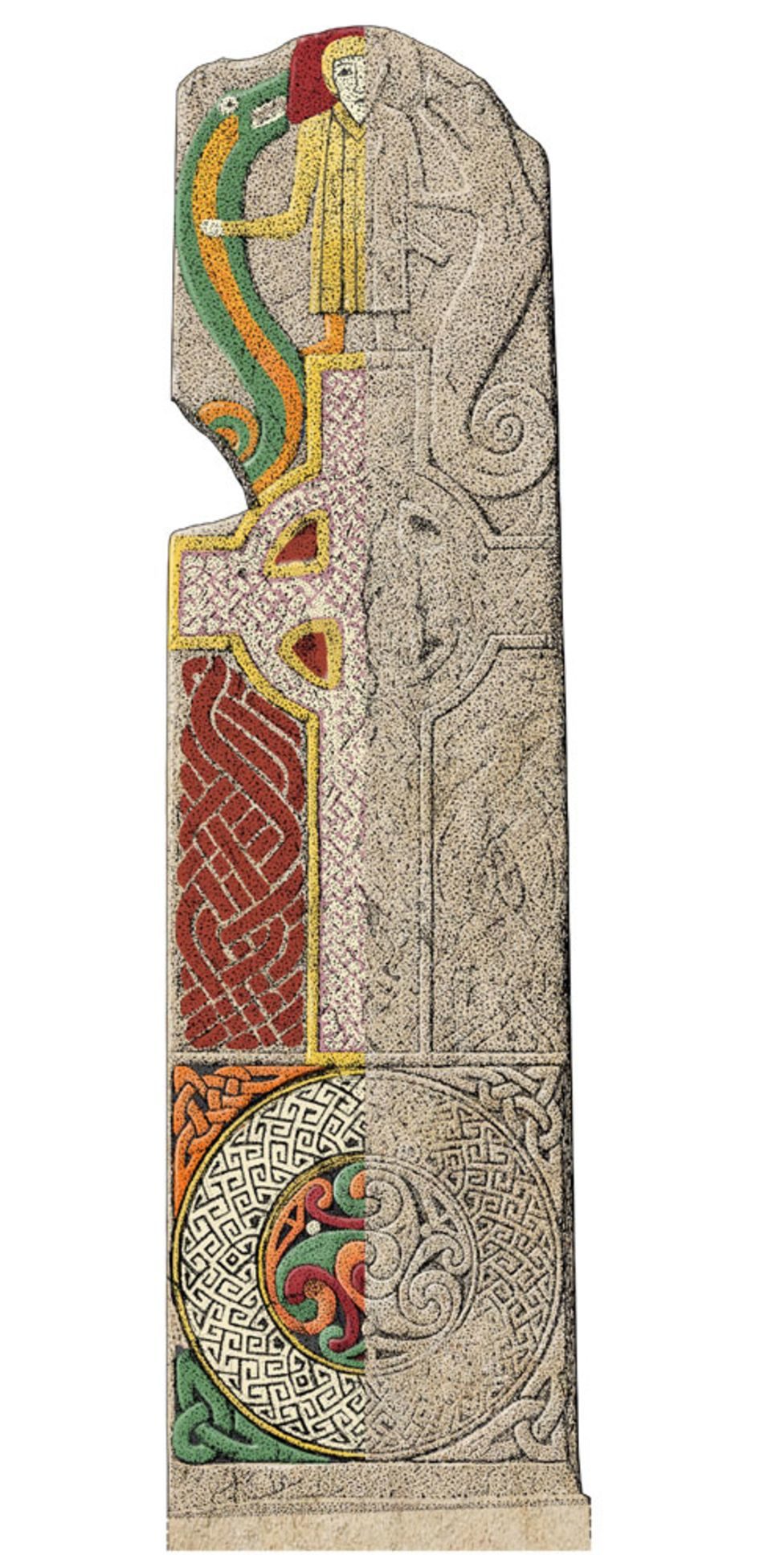
The stone was found lying in the ground and covered by vegetation at an early Christian church site near Dingwall.
Archaeologists have now revealed the side of the stone that was down in the earth and hidden from view was decorated with "two massive beasts".
Just over a metre of the original two metre-tall (6ft) stone survives.
The beasts were carved down the side of a cross.
John Borland, of Historic Environment Scotland and president of the Pictish Arts Society, said: "The two massive beasts that flank and surmount the cross are quite unlike anything found on any other Pictish stone.
"These two unique creatures serve to remind us that Pictish sculptors had a remarkable capacity for creativity and individuality.
Comment: Actually, it's remarkably similar to another Pictish stone (seen below) which would lead one to think that it's likely that there was some significant meaning behind the image rather than some expression of 'individuality' - note the two 'beasts'/serpent-like creatures facing the man:
"Careful assessment of this remarkable monument will be able to tell us much about the production of Pictish sculpture that we could never have guessed at."
The stone, which was used as a grave marker in the 1790s, was discovered in August by Anne MacInnes of North of Scotland Archaeological Society (NOSAS).
NOSAS and the Pictish Arts Society have launched a crowdfunding campaign to raise £20,000 towards the cost of conserving the stone.
It is one of only about 50 Pictish cross-slabs of its kind known to exist.
The Picts created cross-slabs, intricately decorated standing stones.
They also constructed impressive hill forts to defend themselves against rival tribes and invaders.
The Picts battled against the Romans, Angles and the Vikings.




IDK if it's representative of the Trinity, since the cross is the centerpiece, but it is cool. I am going to have to digitize that in Adobe Illustrator and figure out how to present it. There's probably a copyright on it so doubtful I could produce anything for public consumption
The either/or systems of control in today's world are working magnificently. Throw in a third choice and suddenly people's brains explode.